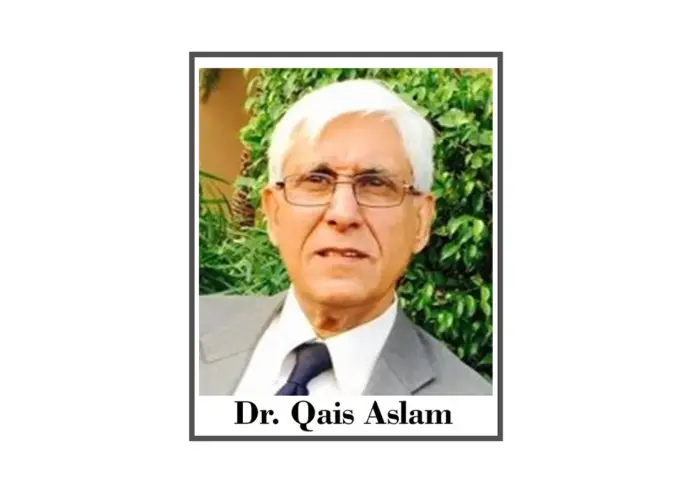Energy is the lifeblood of modern industrial living. Without modern energy sources we would be living in the dark agas. In most cases ‘energy’ takes up three forms – Gas, Oil and Electricity. Gas for cooking and producing electricity; Oil to power vehicles and machines as well as to produce electricity. Electricity, itself a source of power for stationary machines and to electrify human workplaces, homes and streets, can be produced both through environmentally friendly or clean sources like solar, wind, hydel, biomasses, etc. as well as environmentally pollutive or unclean sources like fossil fuels, coal etc.
Dr. Einstein’s formula states that Energy can neither be created, nor destroyed. But from the point of view human and other living forms on earth, energy form like Oxygen is conducive to life and energy form like CO2 is dangerous to life. All human activities like burning of fossil fuels etc., transform ‘good for life energy’ into ‘bad for life energy’ with devastating consequences for the future. The tradeoff is that modern living should switch from burning fossil fuels towards using clean and environmentally friendly energy sources and where it is pertinent to use fossil fuels, they should be used in such a way that the consequence of production of CO2’s is mitigated by planting of trees and by replacing old redundant technologies with new ‘green’ technologies. Only then can we mitigate the adverse effect of burning of fossil fuels.
On one side, the issue today is not only that all humans on earth should have clean energy sources to cook, commute and to light their workplace and homes, but on the other hand these energy sources should be affordable for all. SDG Goal 7 states, “Ensure Access to Affordable, Reliable, Sustainable and Modern Energy for All”. The SDG Goal 7 underlines that, “Renewable energy solutions are becoming cheaper, more reliable and more efficient every day. Our current reliance on fossil fuels is unsustainable and harmful to the planet, which is why we have to change the way we produce and consume energy. Implementing these new energy solutions as fast as possible is essential to counter climate change, one of the biggest threats to our own survival. Goal 7.1 is “By 2030, ensure universal access to affordable, reliable and modern energy services”. Goal 7.2 is “By 2030, increase substantially the share of renewable energy in the global energy mix”. Goal 7.3 is “By 2030, double the global rate of improvement in energy efficiency”. Goal 7.4 is “By 2030, enhance international cooperation to facilitate access to clean energy research and technology, including renewable energy, energy efficiency and advanced and cleaner fossil-fuel technology, and promote investment in energy infrastructure and clean energy technology”.
Most of the gas produced in the country has been eroded by domestic consumption of cooking, electricity production, industrial usages and is used in fertilizers. Now gas in the country is a scarce resource. Although scientists knew that Sui gas was well poised for petrochemical industry as a raw material where the finished product could have been exported and with the revenue, cheaper foreign gas from Iran Central Asia or Russia could have been imported, but we chose the Gulf gas and oil. Pakistan’s successive governments have imported LNG at very expensive rates, thus increasing the cost of gas and electricity. We also import Oil from OPEC countries and therefore are a poor, net oil importing nation. Total electricity generation capacity in the country in 2022 is 41,557 MV. “The energy mix in producing electricity in the country, is according to recent data, “consists of 4% nuclear, 29% hydro, 61% fossil-based fuels, and 6% others. Pakistan has an untapped potential of electricity generation of 100,000 MW (Thar coal), 56,000 MW (hydro), 150,000 MW (wind), and ~50,000 MW (solar)” (https://www.power-technology.com/analysis/pakistan-energy-mix/).
The nation and its policy makers have in the past made such agreements that have produced expensive electricity and mainly use imported fossil fuels as its energy sources. It should be noted that Pakistan has the following environmentally friendly sources to produce electricity such as, (1) Hydel power: The Indus water system that falls from top of the world mountains to the deepest ocean of the world at a slant that is almost 45 degrees and can produce electricity for KPK, Punjab, AJK and GB. (2) Wind Power: on the Makran Coast, that is powerful enough to produce electricity for Sindh and Balochistan, if not for the whole of Pakistan. (3) Solar power: in Punjab and Sindh. If every house that is above 5 marlas has solar panels and inverters in place, most of the domestic use of electricity can be shifted to this clean energy source and with reverse metering can even feed the grid. (4) Bio-masses: the residue from agriculture and plants, especially from sugarcane can produce enough energy to light up villages of Pakistan (5) Bio-gases: is produced from residues of animal and human waste and can even be used as gas for cooking or producing electricity in rural areas off the country. (6) Wave power: the waves from the Arabian Sea can be harnessed to produce electricity for small cities and large villages along the coastline and even can feed the national grid. (7) Hot Air Geezers on the mountains: These can produce electricity for remote villages in the mountain ranges of KPK, AJK and GB. Apart from these seven ways to produce sustainable and clean energy for different regions of Pakistan, (8) Nuclear, (9) Gas, are also found in the country and can produce electricity. (11) Coal is another source of production of substandard highly pollutive and unclean energy, but can contribute to relevantly cheap source of producing electricity from domestic sources as a tradeoff from highly expensive imported Oil that is contributing to our pollution levels as well as to the expensive source of energy.
The country also needs to plan its transport industry in such a way that our reliance on foreign fossil fuels should decrease. That can only happen when we start reducing our reliance on luxury cars and start using means of mass transport like electric trains, electric busses and electric cars. Although shifting to these new technologies is expensive, but today’s investment, both by governments, industry and households will go a long way in mitigating adverse effects from burning of fossil fuels and reducing pollutants so that the life of our children is prolonged and becomes sustainable.
Most important issue in Goal 7 is that there should energy sources for all and that they should be clean and cheap. The policy of the energy regulators, the government and the stake holders like DISCOS, WAPDA and the IPPs in Pakistan is advised to this very important SDG Goal. Not only they are producing unclean energy, but also very expensive energy. The recent trend of adding fuel adjustment charges of past consumptions to recent electricity bills where for these unit consumed in July 2022 had a bill of Rs42,000 and the electricity bills in August came to Rs85,000 for equal number of units consumed. Also, the bills come late by 22nd of the month when most of the people have spent larger amount of their incomes and the government gives only two to three days to pay these bills, thus increasing the burden through surcharge when they have not been paid by 24th. All this is exploitative, cruel and favors the inefficient power producers, when the extra burden could have been shared by IPPs, government through tax payers and the consumers equally. Doubling the cost of usage of electricity, because managers in the IPPs had not visualized the rate fluctuations of energy cost cannot be excused because this is criminal neglect on behalf of ORGA, IPP DISCOS and the government and all losses are put on the consumers through line losses and fuel adjustment charges. It should be shown here that for every rupee invested in the energy sector of Pakistan, only Rs0.25 worth of electricity is produced, due to secondhand, redundant and obsolete technology with a loss of Rs0.75 per rupee, that is collected from the consumer as line losses.
An advice to the government and the power producers would be to use the money collected to change technologies toward environmentally friendly and cheap energy sources, through community participation, through allowing industry to sell electricity to each other, for communities to collectively produce electricity through renewable sources rather than the system of current production and consumption of energy which is not environmentally friendly and the cost cannot be sustained when Pakistan is in dire dollar and economic crisis.







